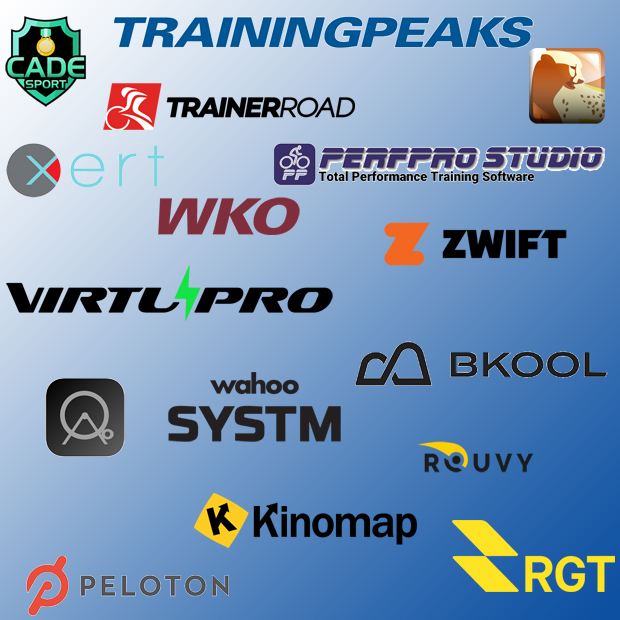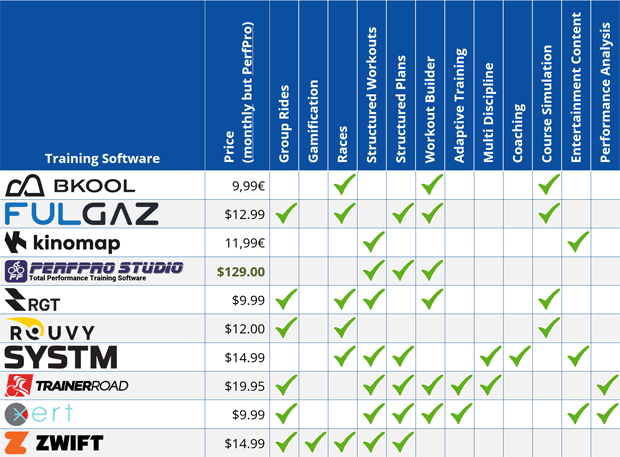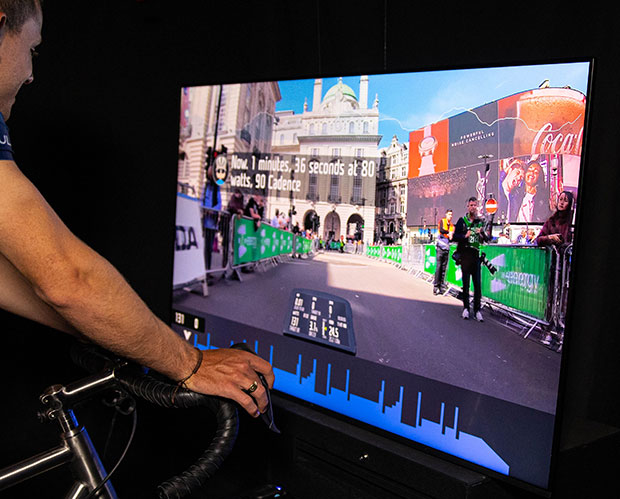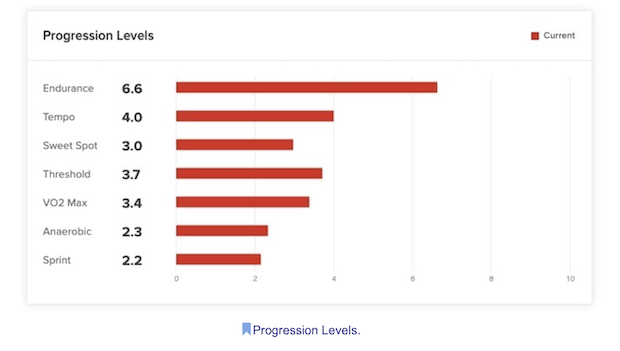The Best Bike Training Software

Ok, the title is clickbait. There are more than a dozen mainstream training software options, each with its own religious debate defending it as the best. Winter is here for half the globe, and that means many of us will be spending more time training in our pain caves. A critical part of successful indoor training is choosing the best software… for each of us.
Everyone has different preferences and things that motivate us on an indoor trainer. And there is no training solution that is all things for all people – each focuses on a particular set of features that appeals to people differently. There are three general approaches to the user experience: pure digital virtualization, augmented reality that overlays avatars on videos of actual courses, and basic numbers and gauges. Some focus on formal structured workouts and plans while others focus on the ride or course with less emphasis on the workout itself. Most are monthly or annual subscriptions, and the prices below are in USD for monthly subscriptions where available. One features a one-time price to license the software for up to three riders. Then there are additional features like workout builders, automated dynamic plan building, coach integration, entertainment content, etc.
This is the introduction article to a deeper look across the training software landscape at what each platform is trying to be and then how well it is at doing its thing. The table below outlines the major training software products and the key differentiating features. The intent of this is not to explore every angle and feature across the product landscape but focus on those products and features that are most likely to be important to most people. If you are looking for that niche solution that will run your CompuTrainer connected over USB cable while not connected to the Internet, this review is not for you.

The list of training products above is not exhaustive. There are others that are small market, niche, or new and emerging. Two to watch are CADEsport (formerly CVRcade) and VirtuPro Cycling (formerly Veloton). These two are gaining attention, but they are still emerging in development so features and pricing are fluid. CADEsport is a gamification platform with virtual races and environments. VirtuPro is a gamification platform designed to intensify serious training.
There are others that may be conspicuously missing to a few people. Peloton is much more than a training platform and has been exhaustively reviewed. GoldenCheetah, TrainingPeaks, and WKO are all primarily performance analysis tools. They may have some bike training capabilities, but they are generally not used for that.
Group Rides
Group Ride support means that you and others across the Internet can ride together in the virtual or simulated course. You could race against each other, but they are not necessarily formally structured and controlled races. Advanced group ride features include messaging to each other, drafting, private and open rides, etc.
Gamification
Gamification is a virtual, digital experience like a video game. These are not bound to traditional roads and spaces. They can be imaginary routes in space, volcanoes, virtual cities, etc. They are limited by their developers’ imaginations. They may also include diversions like in-game challenges, power-ups, detours, rider normalization, etc.
Races
Race support is a popular feature across many products. These are controlled events where everyone starts together (or are normalized if starting separately). And, they may have groups by rider ability as well as normalization to weight. The races range from formally sponsored events, private races, open races, etc. Races may also have support for standardized minimum hardware and additional external protocols to assure integrity of the racers.
Structured Workouts
Structured workouts and structured plans are often thrown in together, but they are different. Structured workouts are individual workouts that focus on a specific training attribute such as V02 Max, Anerobic, Sprint, Endurance, Tempo, Threshold, Recovery, etc. And they are often organized by duration and intensity. Advanced platforms automatically index the workouts to your abilities (typically FTP, threshold power, sprint power, etc.)
Structured Plans
Structured Plans build on Structured Workouts. These are multi-week training plans comprised of structured workouts that are designed for a rider’s goals and abilities. Some platforms have a few canned plans that riders can select. On the other end of the spectrum, the platform will build a plan based on your desired duration, phase of training, type of event, days of week that you can workout, and your strengths and weaknesses.
Workout Builder
Workout builder is the ability to create your personal workout in the tool. Many have the ability to import a workout from another platform, like Training Peaks for example. This is building it in the tool itself.
Adaptive Training
Adaptive training is a new feature that has been emerging over the past couple years. As this capability matures, it could do away with traditional plans toward an experience more like a personal coach. Adaptive training looks at your daily activities (how well you performed to plan, HR data, and other analytics data from your tools, etc.) to choose the best workout for you on that day.
Multi Discipline
Multi discipline structured plans are very important for triathletes, even if you are not following the plan for the other two disciplines. At the minimum, the plans account for the running and swimming so that they are not merely a bike-only view of your workout schedule. And they are valuable resources for following a holistic training plan that aligns your running and swimming with your daily bike activities.
Coaching
Coaching is integration with external coaching platforms so coaches can feed workouts directly into the tool. This is extremely important for people with a coach who prefer to log into their training software and work the day’s workout. Typically, a coach would have to be familiar with your tool and tell you what workout to do each day, so it is manual without coaching integration.
Course Simulation
Course simulation is the complementary experience to Gamification. Course simulation is riding recordings of real courses that simulate the grades and road surfaces. These typically have signs and rider avatars overlayed on the view, but the background is actual video. These are very popular for races or riders who want to ride an actual course ahead of a race or ride a legendary course they may never get to ride otherwise.
Entertainment Content
Entertainment content is a broad category of showing videos that are not directly related to the workout (course or raw numbers & charts). These are typically high-quality productions that align with the workout intensity (interviews during recovery segments to intense music or race cut scenes during intense intervals).
Performance Analysis
Performance analysis is another broad category. Many people have an analysis platform of choice already (like TrainingPeaks, Strava, Garmin Connect, Golden Cheetah, etc.), so they may never even notice or care if the training software offers it as well.
Stay tuned over the coming weeks for the deep dives into the training software products. And I am welcome to any feedback about key distinguishing features or products to think about.




